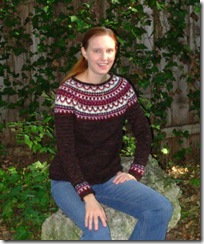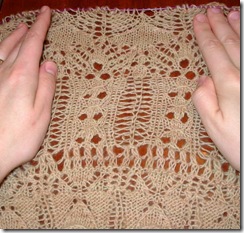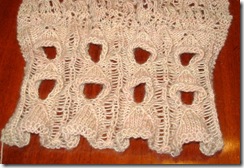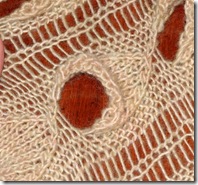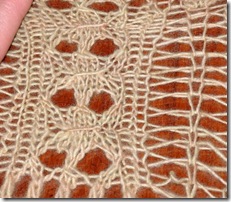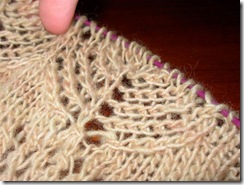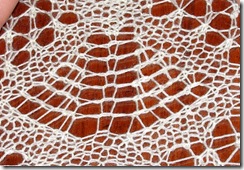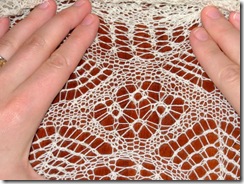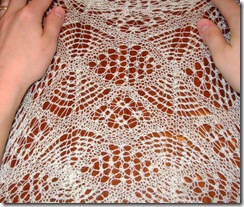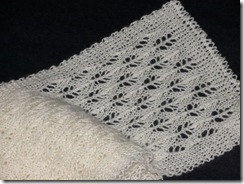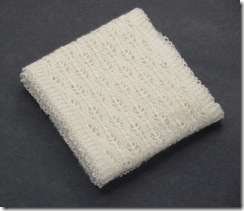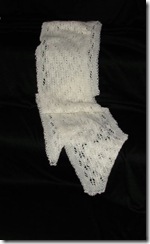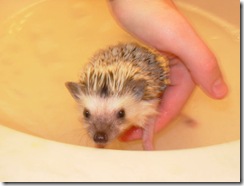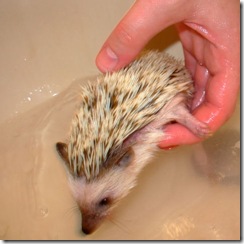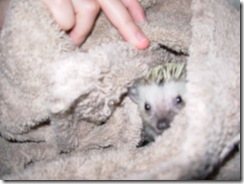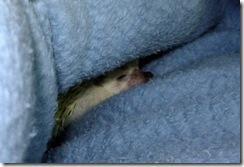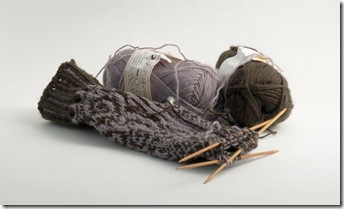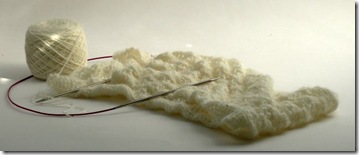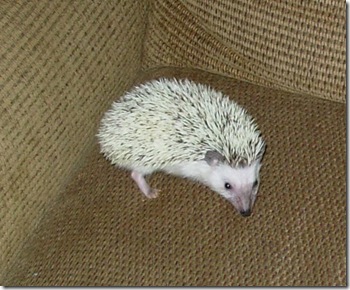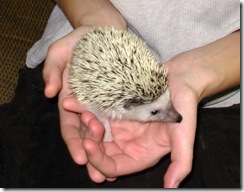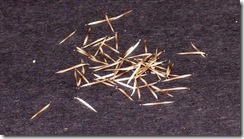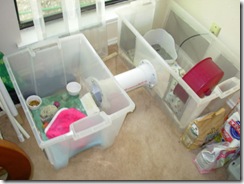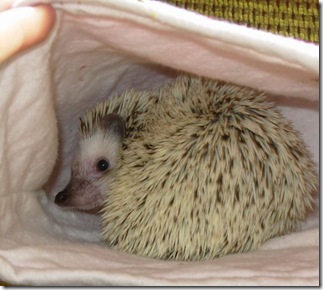Back in April, I knit up a sweater using the Lite Lopi pattern from The Best of 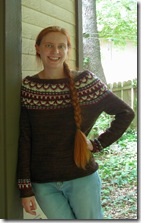 Interweave Knits. I wanted a deeper yoke than the pattern called for, so I added some colorwork and did the decreases as called for in the pattern. Somehow, I wound up with too much yoke/too large an arm, but not enough decreasing. I bound off, blocked it into wearability, and headed off to Boston with my husband for a long weekend. After we got home, I folded up the sweater and stuck it in the closet to rest until I felt like fixing it.
Interweave Knits. I wanted a deeper yoke than the pattern called for, so I added some colorwork and did the decreases as called for in the pattern. Somehow, I wound up with too much yoke/too large an arm, but not enough decreasing. I bound off, blocked it into wearability, and headed off to Boston with my husband for a long weekend. After we got home, I folded up the sweater and stuck it in the closet to rest until I felt like fixing it.
Now that the weather is turning cool again, I thought that it would be nice to have a more functional sweater. So I pulled the sweater out of the closet, dug out the pattern, and started thinking about what was wrong with it.
I looked up the pattern on Ravelry, a knitter’s networking site, to see if any other knitters had my problem. Not too many other knitters seem to have done this one – only 32 projects came up on the Ravelry search. (By comparison, more popular patterns have been entered hundreds or even thousands of times.) Looking at the photos of other Lite Lopi sweaters, I decided that I really didn’t like the shaping or proportions.
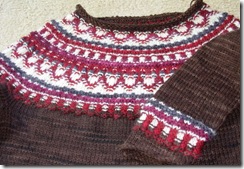 I did, however, still like the colorwork, and especially liked how my color choices turned out. So, I decided to keep the colorwork charts and instruction, and scrap the rest of the pattern. Instead, I pulled out the Elizabeth Zimmerman percentage system. For those of you who are unfamiliar with this sweater “pattern,” nicknamed EPS, this is really a set of mathematical formulas for generating a sweater pattern. I didn’t even really do any math for this sweater. I measured a few other sweaters and blouses that fit me well, figured out where I wanted the yoke to start, and ripped out the previous yoke, back to the join at the armpits.
I did, however, still like the colorwork, and especially liked how my color choices turned out. So, I decided to keep the colorwork charts and instruction, and scrap the rest of the pattern. Instead, I pulled out the Elizabeth Zimmerman percentage system. For those of you who are unfamiliar with this sweater “pattern,” nicknamed EPS, this is really a set of mathematical formulas for generating a sweater pattern. I didn’t even really do any math for this sweater. I measured a few other sweaters and blouses that fit me well, figured out where I wanted the yoke to start, and ripped out the previous yoke, back to the join at the armpits.
I started the colorwork again as stated in the pattern, knit for 1/2 the depth of the yoke, did the first set of decreases, and realized that I was out of colorwork charts. So, I started the charts over again, improvising some color changes and at one point totally making something up because I realized that I had made a mistake, and was tired of ripping things out. So far, so good.
Garments that are constructed with identical fronts and backs – such as the Lite 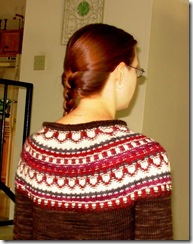 Lopi pattern – tend to feel like the are always pulling back; this is because human bodies are not symmetrical from front to back. The EPS solution to this is to add some short row shaping. I started thinking about this as I got close to completing the yoke. I looked at the EPS directions for the shaping… and discovered that I was supposed to insert half of the short rows before starting the yoke. At this point I uttered a few words that I will not repeat on this family-friendly blog.
Lopi pattern – tend to feel like the are always pulling back; this is because human bodies are not symmetrical from front to back. The EPS solution to this is to add some short row shaping. I started thinking about this as I got close to completing the yoke. I looked at the EPS directions for the shaping… and discovered that I was supposed to insert half of the short rows before starting the yoke. At this point I uttered a few words that I will not repeat on this family-friendly blog.
Not wanting to rip back again, I picked a plain knit row and threw in a short row along the back. About an inch later, feeling adventurous, I found a not-too-complex colorwork row and added another short row. I tried on the sweater. Still looked good. So I finished the yoke, added another short row while knitting the collar, and bound off.
And, it looks nice! I’m not totally sure about the rolled collar; I might yet rip it out and do something different. But, at this point I am much, much happier with the sweater than I was 3 days ago. Yippie!
